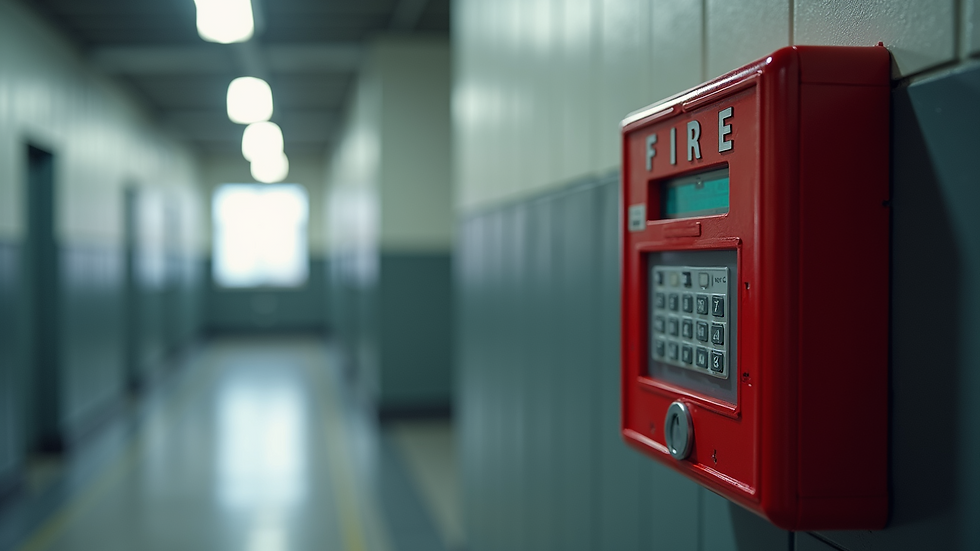Comprehensive Approaches to Building Safety
- info992741
- Oct 30
- 3 min read
Ensuring the safety of buildings is a critical priority for property owners, managers, and occupants alike. A secure building not only protects physical assets but also safeguards the well-being of everyone inside. Achieving this requires a comprehensive approach that integrates multiple strategies, technologies, and best practices. This article explores effective methods to enhance building safety, focusing on practical steps and modern security solutions.
Understanding the Importance of Security Solutions in Building Safety
Building safety is more than just structural integrity; it encompasses protection against unauthorized access, fire hazards, environmental threats, and emergencies. Security solutions play a vital role in this ecosystem by providing layers of defense that deter, detect, and respond to potential risks.
For example, installing access control systems such as key cards or biometric scanners restricts entry to authorized personnel only. Surveillance cameras monitor activity around the clock, providing real-time alerts and recorded evidence if incidents occur. Fire detection and suppression systems reduce the risk of catastrophic damage and ensure occupant safety.
By combining these elements, building managers can create a safer environment that minimizes vulnerabilities. Investing in professional security solutions ensures that the latest technologies and expert knowledge are applied effectively.

Key Components of Effective Security Solutions
To build a robust safety framework, several components must work together seamlessly. Here are the essential elements:
1. Access Control Systems
Access control limits who can enter specific areas within a building. Options include:
Key cards or fobs: Easy to manage and replace.
Biometric scanners: Use fingerprints or facial recognition for higher security.
PIN codes: Simple but less secure if codes are shared.
Implementing tiered access levels ensures sensitive areas like server rooms or executive offices remain protected.
2. Surveillance and Monitoring
CCTV cameras provide continuous monitoring and act as a deterrent to criminal activity. Modern systems offer:
High-definition video quality.
Night vision capabilities.
Remote access via smartphones or computers.
Motion detection alerts.
Regularly reviewing footage and maintaining cameras is crucial for effectiveness.
3. Fire Safety Systems
Fire safety includes smoke detectors, alarms, sprinklers, and emergency exits. Best practices involve:
Installing interconnected smoke alarms.
Conducting regular fire drills.
Ensuring clear signage for evacuation routes.
Maintaining fire extinguishers and sprinkler systems.
4. Intrusion Detection
Sensors on doors and windows can detect unauthorized entry attempts. These systems often integrate with alarms and security services for rapid response.
5. Emergency Preparedness
Having a clear emergency plan is vital. This includes:
Training staff on evacuation procedures.
Establishing communication protocols.
Coordinating with local emergency services.

Integrating Technology for Smarter Building Safety
The rise of smart technology has transformed building security. Internet of Things (IoT) devices enable real-time data collection and automated responses. Examples include:
Smart locks that can be controlled remotely.
Environmental sensors detecting smoke, gas leaks, or water intrusion.
AI-powered video analytics that identify unusual behavior or crowding.
These technologies improve responsiveness and reduce human error. However, they require proper cybersecurity measures to prevent hacking or data breaches.
Practical Steps to Enhance Building Safety Today
Implementing comprehensive safety measures can seem overwhelming, but breaking it down into manageable steps helps:
Conduct a Security Audit
Assess current vulnerabilities and identify areas for improvement.
Develop a Security Plan
Outline policies, procedures, and technologies to be used.
Invest in Training
Educate staff and occupants on safety protocols and emergency response.
Upgrade Infrastructure
Install or update access control, surveillance, and fire safety systems.
Regular Maintenance and Testing
Schedule routine checks to ensure all systems function correctly.
Engage Professional Services
Partner with experts who provide professional security solutions tailored to your building’s needs.
Building Safety Beyond Technology: Human Factors and Culture
Technology alone cannot guarantee safety. Cultivating a safety-conscious culture is equally important. Encourage:
Reporting of suspicious activity.
Adherence to safety rules.
Participation in drills and training sessions.
Clear communication and leadership commitment foster an environment where safety is a shared responsibility.
Future Trends in Building Safety and Security Solutions
Looking ahead, building safety will continue to evolve with advancements such as:
Integration of AI and machine learning for predictive security.
Enhanced biometric authentication methods.
Sustainable safety solutions that align with green building practices.
Greater use of drones and robotics for inspection and monitoring.
Staying informed about these trends helps organizations maintain cutting-edge protection.
Taking the Next Step Toward Safer Buildings
Building safety is a dynamic challenge that requires ongoing attention and adaptation. By combining technology, planning, and human engagement, property owners can create secure environments that protect people and assets effectively.
For tailored advice and implementation, consider consulting providers of professional security solutions who specialize in comprehensive building safety strategies.





Comments